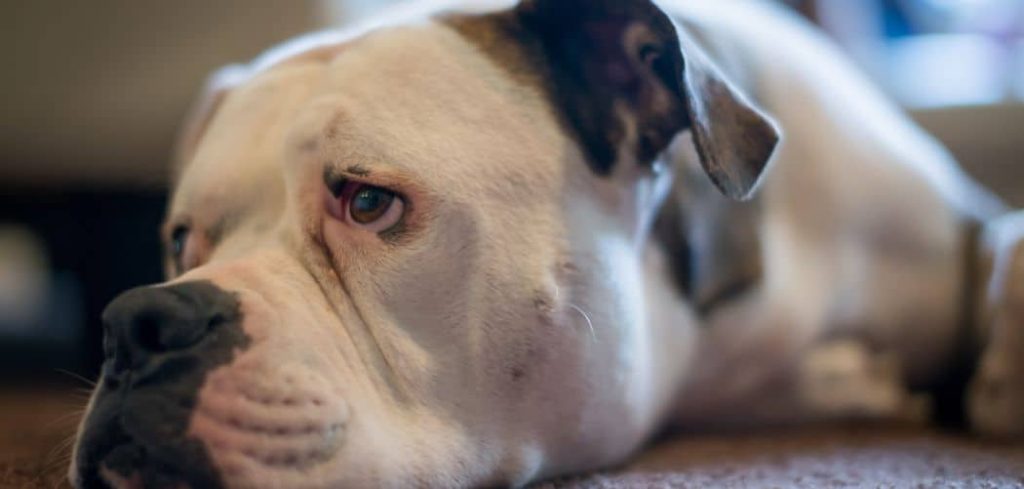Benadryl (diphenhydramine) is commonly given to dogs to manage allergies, itching, or mild allergic reactions. However, some dog owners notice that their dog starts panting after taking Benadryl, which can be concerning.
We outline the common reasons why dogs may pant when taking Benadryl, what you can do at home, and when to seek veterinary help.
Dog Panting and Benadryl — Why It Happens
Panting after taking Benadryl can occur because some dogs react differently to the medication. While Benadryl is often used to treat allergies and itching, it can cause side effects such as drowsiness, restlessness, or mild changes in breathing.
In some cases, panting may happen if the dose is too high, if your dog is sensitive to the medication, or if there’s an underlying condition like heart or respiratory disease being triggered. Occasional yawning may also appear as a stress response to feeling unwell.

Dog Panting and Benadryl: Common Causes
Medication Side Effects
Benadryl can cause panting as a side effect in some dogs. While it is generally considered safe, diphenhydramine affects the nervous system and can lead to mild excitability, restlessness, or increased panting.
Some dogs may pant shortly after administration, especially if they are sensitive to medications or given a higher dose than recommended.
While mild panting is often not dangerous, sudden or extreme panting should be monitored and discussed with your veterinarian.
Read more: Dog Panting and Prednisone (Why it happens)
Allergic Reactions
Panting may indicate that the dog is still experiencing an allergic reaction despite taking Benadryl.
Allergies can cause discomfort, itching, swelling, or difficulty breathing, leading the dog to pant to cope.
Owners should watch for additional signs like hives, paw licking, facial swelling, or redness. Persistent or worsening allergic reactions require veterinary attention, as severe reactions can become life-threatening.
Anxiety or Stress
Panting may also be related to anxiety or stress, which can be exacerbated by medication.
Some dogs may become restless, more alert, or nervous after taking Benadryl, particularly if they are already anxious due to environmental changes or discomfort.
Signs of stress include pacing, whining, trembling, or seeking constant attention. Providing a calm, quiet space and offering gentle reassurance can help alleviate stress-induced panting.
Overheating or Physical Activity
Panting can be a sign of overheating, which may be more pronounced while a dog is on Benadryl.
Sedation from the medication may reduce a dog’s ability to regulate body temperature efficiently.
Ensure your dog has access to water, shade, and a cool resting area. Avoid strenuous exercise while the dog is under the influence of Benadryl, especially during hot weather. Excessive panting in heat can be dangerous and requires prompt action.
Interaction with Other Medications
Dogs on multiple medications may experience increased panting due to drug interactions.
Benadryl combined with other sedatives, anti-anxiety drugs, or pain medications may intensify side effects such as panting, dizziness, or restlessness.
Always consult your veterinarian when giving multiple medications to ensure the combination is safe and to prevent adverse reactions.
Underlying Health Conditions
Panting while taking Benadryl can also reveal underlying medical issues. Respiratory problems, heart disease, or metabolic disorders may become more noticeable when the dog is medicated.
Watch for labored breathing, coughing, pale gums, or fatigue. A veterinary evaluation can help determine whether panting is medication-related or caused by another condition that needs treatment.
What to Do If Your Dog Is Panting on Benadryl
Monitor your dog closely after administering Benadryl, noting the timing, duration, and intensity of panting.
Ensure your dog has a calm, quiet environment to reduce stress and support overall comfort.
Provide fresh water and a cool area to rest, particularly if panting seems linked to heat or activity.
Avoid excessive play or exercise until the dog’s behavior normalizes and the medication’s effects settle.
Contact your veterinarian if panting appears extreme, prolonged, or accompanied by other concerning symptoms. Adjustments to dosage or timing may help manage side effects safely.
When to Call or Visit Your Vet
Seek veterinary attention if your dog shows:
Persistent or severe panting not easing after Benadryl’s expected effect period
Difficulty breathing, wheezing, or signs of respiratory distress
Pale, blue, or discolored gums
Excessive lethargy, disorientation, or obvious discomfort
Vomiting, diarrhea, or other concerning gastrointestinal issues
Prompt veterinary evaluation ensures safe management of both medication side effects and any underlying conditions.
Read more: Dog Panting After Medication (Signs that require a vet visit)
Key Takeaway
Panting in a dog after taking Benadryl can be a mild side effect, a reaction to ongoing allergies, or a sign of stress or underlying medical concerns.
Careful observation, a calm environment, and consulting your veterinarian when needed will help ensure your dog remains safe, comfortable, and properly treated.
Monitoring for unusual, prolonged, or severe panting is essential for your dog’s health and well-being while on medication.
